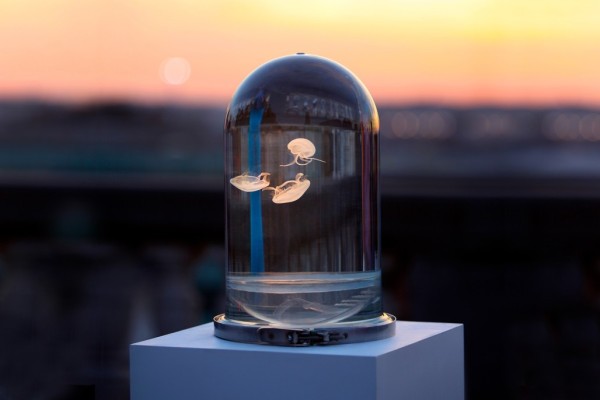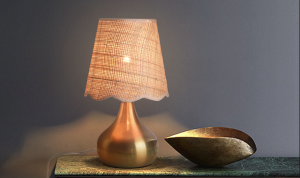Choosing the Right Jellyfish Tank
4 min read

If you want to keep jellyfish, you must know how to choose the best tank for them. There are many types of jellyfish tanks available. In addition, you should also know the types of jellyfish you should keep. This article will discuss the types of jellyfish tanks and the water temperature that is ideal for them.
Ideal water temperature for a jellyfish tank
The ideal water temperature for a jellyfish tank is around seventy-two degrees Fahrenheit. This is a little lower than room temperature, but it doesn’t have to be too high or too low to be healthy for the jellyfish. If you have concerns about the temperature in your tank, you can talk to your vet or check the water temperature on a thermometer. If it’s too low, you can install a heat lamp or raise the thermostat in your home to increase the temperature.
In addition to this temperature, you should also consider the salinity of the water. A tank with more than 28 parts per thousand (ppt) of sodium isn’t ideal for jellyfish. Jellyfish do best in water that is no more than 28-30 ppt (parts per thousand). Water with more than 30 ppt will cause your jellyfish to be stressed and die.
Moon Jellies live in cooler waters than tropical aquarium fish. They can tolerate temperatures ranging from 55 to 65 degrees Fahrenheit and 12 to 18 degrees Celsius. For this reason, it’s important to purchase a refrigeration unit for your jellyfish tank.
Types of jellyfish tanks
When looking for the right tank for your jellyfish collection, there are several different types to choose from. Desktop aquariums are a popular choice for those with limited space, while floor aquariums are larger and can be placed on the floor of a room. These tanks are ideal for those who want to keep their jellyfish close to home.
Because jellyfish produce a lot of waste, you need a tank that is designed to be clean and healthy. The ideal temperature for a tank is between 53 and 64 degrees Fahrenheit, which is slightly below room temperature. You also need to be careful not to overfeed your jellyfish, as this can affect the quality of the water.
The right jellyfish tank should maintain a gentle current to keep the jellies from becoming evicted. The current should be just strong enough to lift them from the bottom of the tank, but not too strong so that they can damage the tank. A tank with an EON or a Cubic bottom will allow you to maintain a gentle current without worrying about jellies brushing against the substrate.
Buying jellyfish in person
If you’re not able to visit a live aquarium, the next best thing is to buy jellyfish in person from a reputable pet supply store. Ask the sales associate to help you choose the right jellyfish for your aquarium. If possible, buy jellyfish that are active and have healthy tentacles. You’ll find many species at these stores, including moon and blue blubber jellyfish. They’re usually sold in a plastic bag and shipped overnight.
While they’re not a traditional pet, jellyfish are unique and fascinating animals that will add a unique glow to your room. The glistening and iridescent luster of these creatures will remind you of those lava lamps from the sixties. However, before you purchase your new pet, be sure to ask your supplier about the appropriate food for jellyfish.
Jellyfish can live for as long as 12 to 15 months in an aquarium if properly cared for. They’re best kept in a tank that is designed for them. Depending on the species, you may want to buy a smaller tank that can accommodate one or two jellyfish. Alternatively, you may wish to invest in a medium or large tank if you plan on keeping several different species.
Care of jellyfish
There are a few important considerations when it comes to caring for your jellyfish tank. For starters, keep in mind that these creatures are very sensitive to rapid changes in salinity, temperature, and pH. It is vital that you maintain the right balance in your tank and make sure you change the water frequently. For example, if your jellyfish tank is filled with salt water, make sure to replace the water once a week. It is also important that you check the salinity of the water regularly.
The water temperature of your jellyfish tank should be between 18 and 25 degrees Fahrenheit. Although this is usually a few degrees lower than room temperature, you can keep the temperature of the water above this temperature if the jellyfish are undergoing a growth phase. In addition, it is essential to change the water regularly and to clean the tank regularly. This maintenance is relatively easy to perform. You can even install a waterproof thermometer to monitor the temperature of the water inside the tank.
Jellyfish should be kept in special aquariums to ensure their safety and well-being. They should be kept in tanks with rounded corners to avoid them becoming trapped. The aquarium should have a constant flow of water to mimic the ocean current. If possible, use an air pump to oxygenate the water. You can also purchase brine shrimp to feed your jellyfish. Just be sure to check the feeding schedule and quantities with your pet supplier.






